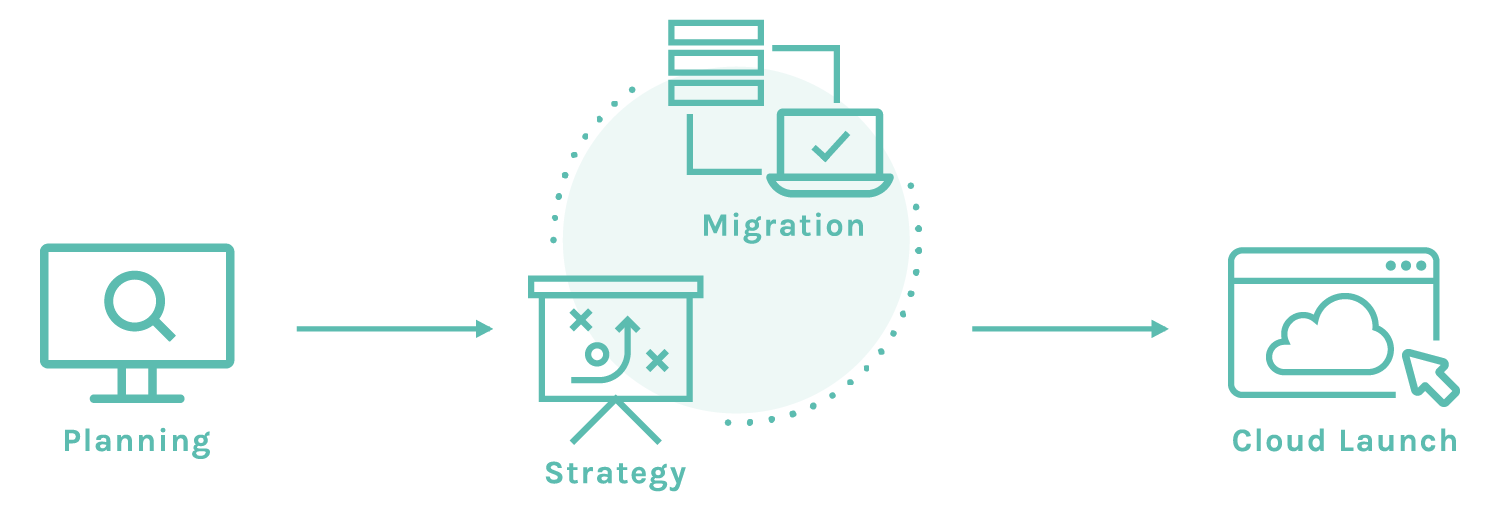Cloud Migration
Segue Technologies® supports organizations in meeting Federal mandates by moving legacy systems to scalable and secure cloud environments
Many DoD and Government systems have a mandate to move to the Cloud, however, not many organizations have a Cloud migration strategy they can rely on to scope and successfully execute a migration. Moving to the Cloud offers new resource management and automation capabilities that require much more than simply copying source code onto a new cloud-based server.

Key Challenges in Migration Efforts
- Planning cloud architecture and network/data access to support Risk Management Framework (RMF) accreditation requirements
- Understanding and planning the best blend of the full range of new service options
- Managing surge support across migration for onboarding and training for specialized skills
- Managing the cultural change to transition operations, development and management teams to the new environment
- Lack of clear understanding of the goals and benefits sought in the migration
Benefits of Cloud Migration
Increased Scalability
No need to accurately estimate server resources and network traffic utilization for peak and off-peak demand. Infrastructure resources will automatically adjust to demand.
Reduced Operational Costs
No upfront infrastructure costs, you only pay for what you use. Architecture based on serverless computing and infrastructure as code allows scaling up and down resources based on actual demand.
Disaster Recovery
A Cloud based solution offers automated backup capability to different regions nationally or parts of the world. Automated health checks allow for a self-healing infrastructure capability, allowing your cloud resources to automatically and seamlessly recover from failures.
Enhanced Security
Cloud solutions are built with security measures from the ground up. Data is automatically encrypted while in transit and can easily be encrypted while at rest. Web Application Firewall (WAF) and various other security features provide a level of security often unmatchable by on-premise resources.
Focus on Innovation
Cloud allows your organization to focus on the core business and innovate new solutions. With ability to standup infrastructure resources such as servers, databases and subnets economically with a few key strokes, your organization can experiment with new ideas and find what works for your organization without having to make any long term commitments.
Cloud Migration Strategies
Overall, moving to the Cloud is a smart move to improve scalability, reduce costs associated with hardware and sustainment, and leverage the benefits of transferring security, disaster recovery, and server administration to the Cloud provider. However, it is critical to understand your Cloud options to execute a solid cloud migration strategy.
![]()
Rehosting (Lift and Shift)
This approach allows on premises configurations to be ported using the current architecture to gain valuable experience. It’s often better to optimize and plan improved cloud configurations using the experience gained from initial build out of application, databases, and traffic routes. However, this approach may require significant redevelopment, open up new issues with the legacy code operating in a new environment, and migrate legacy system problems to the cloud as well.
![]()
Rearchitecting
The cloud provides easy experimentation to build and test complex configurations to optimize configurations for cost and performance considerations. Connecting the application and infrastructure controls enables resource scaling for peak and low demands to reduce costs. Technical teams can choose fully managed platforms for database and development environments to roll out new technologies more rapidly and relieve in house administration requirements.
![]()
Application Transformation
Moving application portfolios from traditionally siloed applications into more integrated host enclaves further reduces complexity, operational costs, and RMF accreditation burdens. Delivering the best blend of managed services and cloud capabilities requires expertise with the full range of service offerings, advanced technology, and understanding of the underlying application and business needs. Unlocking the full range of new service offerings builds solutions that cost less, and consistently outperform legacy architectures..